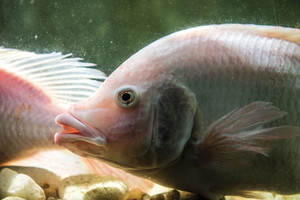
Eduardo Cesar
Specimens of Saint Peter, tilapia’s generic name, at the Fisheries Institute in São PauloEduardo CesarOriginating in Africa’s Nile River, Nile tilapia (Oreochromis niloticus) was consumed by the ancient Egyptians more than 3,000 years ago. Today, it is Brazil’s most cultivated fish and ranks fourth worldwide behind three carp species, according to the United Nations Food and Agriculture Organization (FAO). This national fish preference may seem odd to anyone who does not know its better known name: Saint Peter, which is very often served in restaurants and available in Brazilian supermarkets. Saint Peter is a red skin variety of the same Nile tilapia, which is traditionally black with darker stripes. In fillet form, there is no difference in color and taste. The size of Brazil’s tilapia producing and consuming market acts as an incentive for scientists to research breeding methods, diseases and treatments, and even to find different ways of marketing the product.
The red variety was brought from Israel by the Aquaculture Production Technology (APT) company in the 1980s. “The name Saint Peter came about and stuck, in much the same way as Brazil’s Bombril brand has come to refer to steel wool and Xerox is now synonymous with photocopies,” says zootechnician and professor Alexandre Wagner Silva Hilsdorf of the Genetics Laboratory of Aquatic Organisms and Aquaculture (LAGOOA) at Mogi das Cruzes University (UMC), located in Greater São Paulo. Hilsdorf was one of the first Brazilian researchers to work on tilapia genetics. He coordinated the breeding of a new red variety to solve a problem for Indústria Brasileira do Peixe (known by the name Royal Fish), a company based in Jundiaí (São Paulo). It was producing Saint Peter in the late 1990s and was experiencing difficulty importing matrices from Israel.
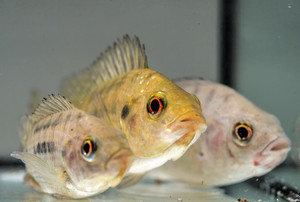
Eduardo Cesar
Young tilapia of the Fisheries Institute…Eduardo Cesar“In 2000 I suggested to the company’s owners that they import a new variety of red tilapia that I had worked on while pursuing my Master’s degree from the Aquaculture Institute of the University of Stirling in the United Kingdom, which is called Red-Stirling, a Nile tilapia (Oreochromis niloticus) mutant that does not have the typical wild black color of tilapia. From this imported red variety, we started a cross-breeding program with the Chitralada black variety in order to genetically improve its performance under the cultivation conditions of the red variety coming from the University of Stirling. The result was a genetically improved fish that is currently sold by the company,” says Hilsdorf (see Pesquisa FAPESP Issue nº 163). The experiments and the development of the new Royal Fish variety were funded by projects under FAPESP’s Innovative Research in Small Businesses Program (PIPE).
Even though black and red tilapia fillets are identical in taste and color, the red ones on display are more attractive to the consumer. “Red gets more attention and it sells more quickly. It reminds us of marine fish and so is more acceptable,” says Hilsdorf. Even with a lower growth performance than the black one, the whole Royal Fish red tilapia sells at the fish farm for R$9.80 per kilo (kg), while black tilapia sells for R$8.50. In São Paulo, the average price per kilo of whole fish in the second quarter of 2016, according to a survey by Embrapa Pesca e Aquicultura, based in Palmas (Tocantins State), was R$12.90, and fresh fillets in supermarkets were R$43.30. The price varies according to the region in Brazil. In Embrapa’s survey, the average price per kilo of the fillet in the Federal District and in the states of São Paulo, Rio de Janeiro, Ceará, Paraná and Santa Catarina was R$31.23, and of the whole fish, R$12.42.
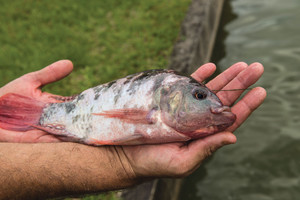
Eduardo Cesar
…and of adults in breeding tanks of Barragem de Ponte Nova in Salesópolis (São Paulo State)Eduardo Cesar“In the late 1980s, the commercial weight of tilapia was around 500 grams after about six months of cultivation, depending on the region. Today, for example, in the region of Santa Fé, northwest of São Paulo, black tilapia cultivated by Indústria Brasileira do Peixe is reaching a weight of 850 grams in six months. The company’s red variety developed in the first breeding phase is reaching a commercial weight of 850 grams after eight months of cultivation,” says Hilsdorf. “With the experience we now have, we are starting new cross-breeding projects using molecular markers, which are evaluated at UMC by biotechnology graduate students. By having more information on the genomic regions of the tilapia, we can select fish whose offspring will be guaranteed to have the characteristics we would like them to have in order to improve the variety, making it more productive to yield a larger size and more flesh.” One of these lines of research is to identify polymorphisms (differences in the DNA sequence) in the tilapia growth hormone gene. “Based on analysis of four varieties bred in Brazil, we have already identified polymorphisms in the growth hormone gene promoter, and we tested the statistical association of the differences in growth found among those fish.”
Another line of research aimed at tilapia breeding involves a tool that is already being used for raising cattle. Veterinarian José Fernando Garcia, a professor at the School of Veterinary Medicine of São Paulo State University (Unesp) in Araçatuba (São Paulo), would like to build on his experience in developing a bovine DNA chip, which is used commercially to select better breeding dairy cattle. He is working on a chip to select tilapia matrices that are the best breeding stock in order to increase fish yield relative to meat production. “We were able to extract the DNA from a piece of tilapia fin and, on a slide with nanosensors, we will identify and characterize genomic points called SNPs (single nucleotide polymorphisms), which are variations in DNA that allow individual characterization of each fish,” Garcia explains. “This tool will make it easier, faster and more efficient to select the matrices. Each pair of tilapia can produce 200 to 300 juveniles per spawning, three to four times a year. The SNPChip will facilitate tilapia breeding which is still in the early stages. Salmon breeding in countries such as Chile and Norway has doubled the size of the fish,” says Garcia.
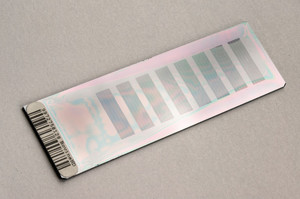
Eduardo Cesar
SNPChip: will be used to identify genetic markers in tilapia matricesEduardo CesarTo determine the genetic variability of the world’s various strains of Oreochromis niloticus, Garcia’s group is collecting DNA from individual specimens that represent commercial and non-commercial varieties of the fish. Genetic markers will be identified from the sample genomic sequences. Then this information will be processed and placed on a microchip by the Illumina company of California. This chip will make it possible to simultaneously analyze hundreds of thousands of tilapia markers. “This product is expected to be ready by 2017,” says Garcia, who recently asked the university if he could work part-time there so he can dedicate more time to the project at his company, Agropartners Consultoria.
Researchers are also studying diseases that affect tilapia in Brazil. The most recent study resulted in a vaccine against Streptococcus agalactiae bacteria, which was developed at Unesp in Jaboticabal. The micro-organism can cause a fish mortality rate of up to 90% of production at the pre-marketing age (about 800 grams). This pathogen is normally present in the water and infects the fish opportunistically when fish are stressed by overcrowded tanks or sudden temperature variations. The infection causes neurological changes in the skin, bulging eye, and neurological signs such as erratic swimming, caused by hemorrhagic meningoencephalitis. Antibiotics are used to combat the problem, but indiscriminate use of medications leads to contamination of water and springs. “Several streptococcal vaccines exist, but we do not have information about their industrial use, often because such information is proprietary. Because of this lack of information, our former doctoral student, Paulo Fernandes Marcusso, proposed sonication, which uses ultrasound to inactivate the bacteria, and utilization of two proteins as immunogens in the vaccine,” says veterinarian Flavio Ruas de Moraes, a professor at the School of Agriculture and Veterinary Sciences (FCAV) of Unesp in Jaboticabal. “In the laboratory tests we performed, the survival rate of the vaccinated fish was 100%,” says Marcusso, now a professor at the State University of Maringá (UEM). In addition to Brazil, the bacteria have also been found in fish populations in the United States, Israel and Japan, notes Marcusso. The next step would be to do testing in the field, which requires funding and commitment from an, as yet, nonexistent company.
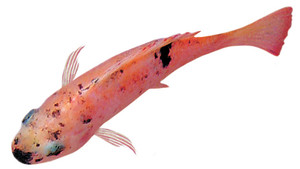
Alexandre Hilsdorf
Royal Fish Tilapia, a result of cross breeding Red Stirling, red tilapia, and Chitralada black tilapiaAlexandre HilsdorfTo combat the bacteria that can infect tilapia yet help fish growth, another line of study involves adding probiotics, either bacteria or yeast, to the feed, as shown by two projects carried out at the Fisheries Institute in São Paulo and funded by FAPESP. In the first project coordinated by agronomist-engineer Leonardo Tachibana, the bacteria Enterococcus faecium, Bacillus subtilis and Lactobacillus acidophilus were used to improve feed utilization and increase fish immunity and reduce disease infection rates. “This process adds 6% to 8% growth to the fish,” says Tachibana. E. faeciumis is already used in poultry and pork where it is mixed with feed for the same purpose.
Tachibana says that although figures are not available, the addition of probiotics to the feed outweighs the cost. “Only 200 grams per ton of feed is used at the juvenile fish stage.” In another project at the Fisheries Institute in São Paulo, biologist Danielle Carla Dias is searching for bacteria in the Nile tilapia itself that can inhibit fish diseases. To do this, she and a group of Institute researchers visited a number of fish farms in Brazil. The result was a collection of 1,125 species of bacteria found in fish, obtained from the mucosa, skin or intestine. “We have been collecting these bacteria since early 2015, and to date we have tested 30 of them, four of which passed the tests because they showed some benefit,” says Dias. “By April 2017 we intend to have a probiotic bacterium specific to tilapia and to initiate the first tests on fish.” With support from FAPESP, she has done postdoctoral internships at the University of Málaga as well as at the Spanish Institute of Oceanography in Spain, where she participated in studies to find probiotic bacteria for marine fish. Such bacteria are now used as additives in the commercial breeding of branzino, sole and mahi-mahi.
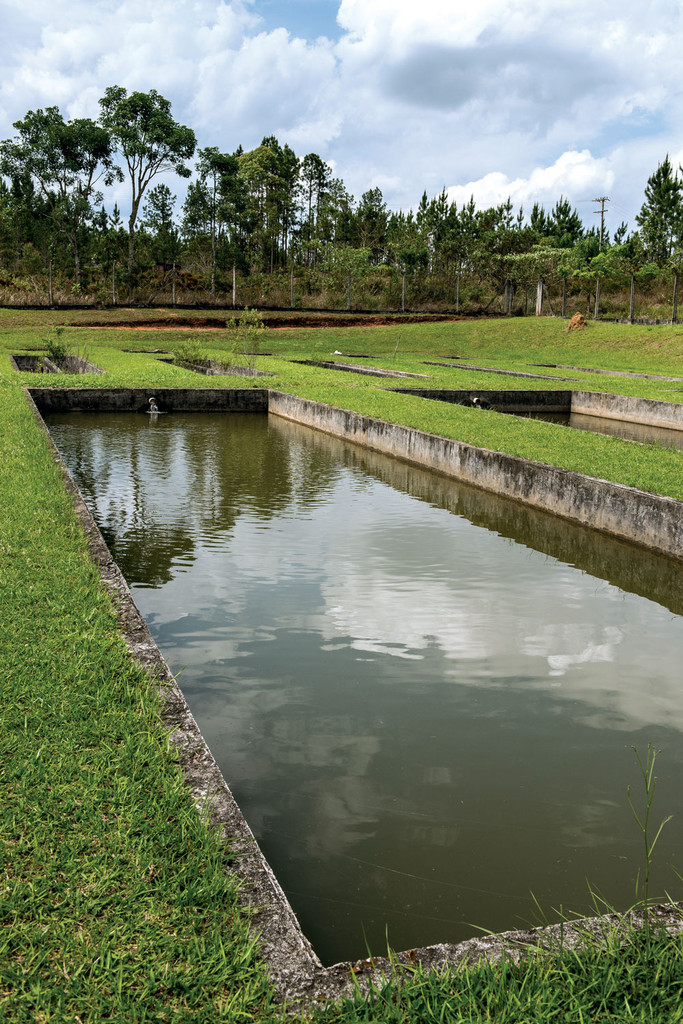
Eduardo Cesar
Breeding tanks in Salesópolis, where UMC performs cross-breeding experiments for genetic improvementEduardo CesarFillets and cubes
The pattern of fish consumption is also the subject of research. The most recent PIPE project coordinated by Hilsdorf was aimed at getting to know the consumer market for red tilapia and developing processed fish products. The study involving Royal Fish, UMC and the Food Technology Institute (ITAL), based in Campinas (São Paulo State), was started in 2011 and also received funding from the Brazilian Innovation Agency (FINEP). Completed in 2014, the project, among other products, produced fillets cooked in the form of cubes and fresh fillets with sauces similar to products found abroad. The cubed fillets in foil packaging, in the form of bags similar to those used in sauces and pastas, are unprecedented in Brazil. They can be eaten at meals or in the form of snacks. “We made cooked tilapia fillets cut into pieces with brine. After sterilization, the product is finished and ready to use,” says José Ricardo Gonçalves, a researcher at ITAL. There have also been several tasting sessions to assess consumer reaction. The cubed and cooked fillet had an acceptance rating of 70% and a rejection rate of 20%, and 10% were indifferent. After the studies, Royal Fish will analyze which products are suitable for the market.
 Intense growth
Intense growth
Rising production shows the importance of tilapia in Brazilian aquaculture
Tilapia is the most cultivated fish in Brazil. In 2015, 219,000 metric tons were caught (slaughtered and sold), according to the Brazilian Institute of Geography and Statistics (IBGE). This number increased by 9.7% compared to 2014 and almost 10 times since 1998, when 30,000 metric tons were sold. The largest producing regions are in Ceará, mainly in the municipality of Jaguaribara; São Paulo, in the cities of Santa Fé do Sul and Rifaina; in addition to Toledo, in Paraná State; and Gloria, Bahia State. According to IBGE, last year production amounted to R$1.177 billion. Chitralada tilapia is one of the most readily available varieties in Brazil; it has been in the country since 1996 and is a descendant of tilapia from Egypt that was imported to Japan and later improved in Thailand. Another variety is GIFT, which stands for genetically improved farmed tilapia, the result of a 10-year project (1988-1997) to produce a genetically superior variety of tilapia at the International Center for Living Aquatic Resources Management (ICLARM), now the WorldFish Center, based in Malaysia. GIFT was introduced in Brazil in 2005 through a partnership between the State University of Maringá (UEM) in Paraná and the WorldFish Center, with the collaboration of the former Ministry of Fisheries and Aquaculture and Companhia de Desenvolvimento Agropecuário do Paraná (Codapar). The Informativo Mercado da Tilápia [Tilapia Market Report], of February 2016, published by Embrapa Pesca e Aquicultura, indicates that Brazil exported 171 metric tons of fresh tilapia fillets to the United States in 2015, 97% of Brazil’s total foreign tilapia trade, which amounted to US$1.3 million. By the first quarter of 2016, also according to Embrapa, exports had already surpassed the 2015 figure, with 188 metric tons exported, amounting to US$1.5 million.
Projects
1. Adding value to the industrialization process of red hybrid tilapia (Oreochromis niloticus) (nº 2011/51143-0); Grant Mechanism Program to Support Research in Small Business (PAPPE-PIPE); Principal Investigator Alexandre Wagner Silva Hilsdorf (UMC); Investment R$102,237.95 (FAPESP) and R$83,298.37 (FINEP).
2. Genetic and zootechnical evaluation of two varieties of Nile tilapia for the establishment of a mass production program for a hybrid (nº 2001/08416-4); Grant Mechanism Innovative Research in Small Businesses Program (PIPE); Principal Investigator Alexandre Wagner Silva Hilsdorf (UMC); Investment R$123,642.39 and US$8,998.66
3. Selection of micro-organisms isolated from tilapia for use as probiotic in fish (nº 2014/15390-1); Grant Mechanism Young investigators in Emerging Institutions; Principal Investigator Danielle de Carla Dias (Institute of Fisheries); Investment R$142,089.84 and US$46,703.86.
4. Probiotics in the feeding of Nile tilapia, Oreochromis niloticus (nº 2013/09731-8); Grant Mechanism Regular Research Grant; Principal Investigator Leonardo Tachibana (Fisheries Institute); Investment R$168,296.53 and US$36,739.96.
Scientific articles
DIAS, M.A. et al. Evaluation of the genetic diversity of microsatellite markers among four strains of Oreochromis niloticus. Animal Genetics. V. 47 No. 3, pp. 345-53. June 2016.
LAGO, A. A. et al. The development of genetically improved red tilapia lines through the backcross breeding of two Oreochromis niloticus strains. Aquaculture. Online. June 30, 2016.
